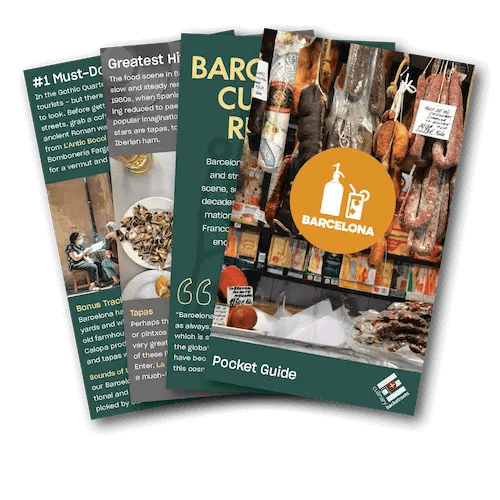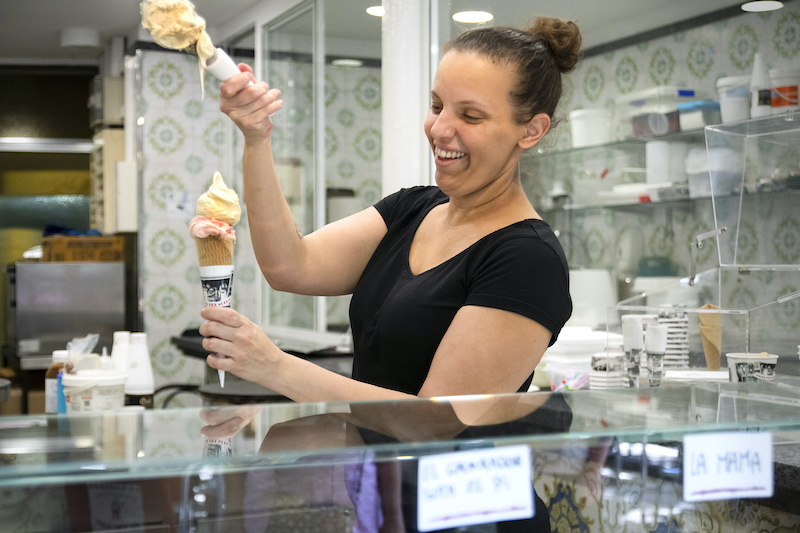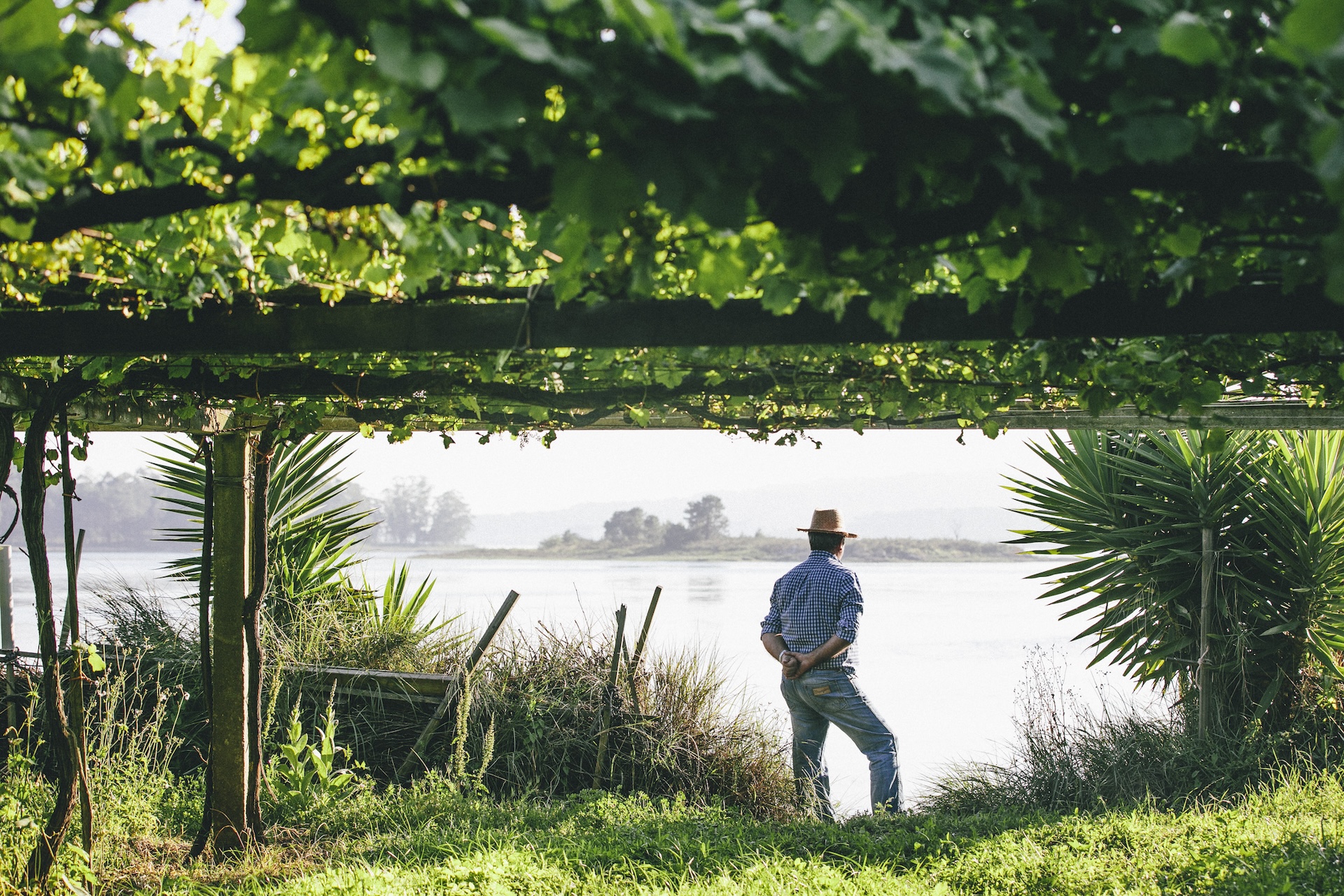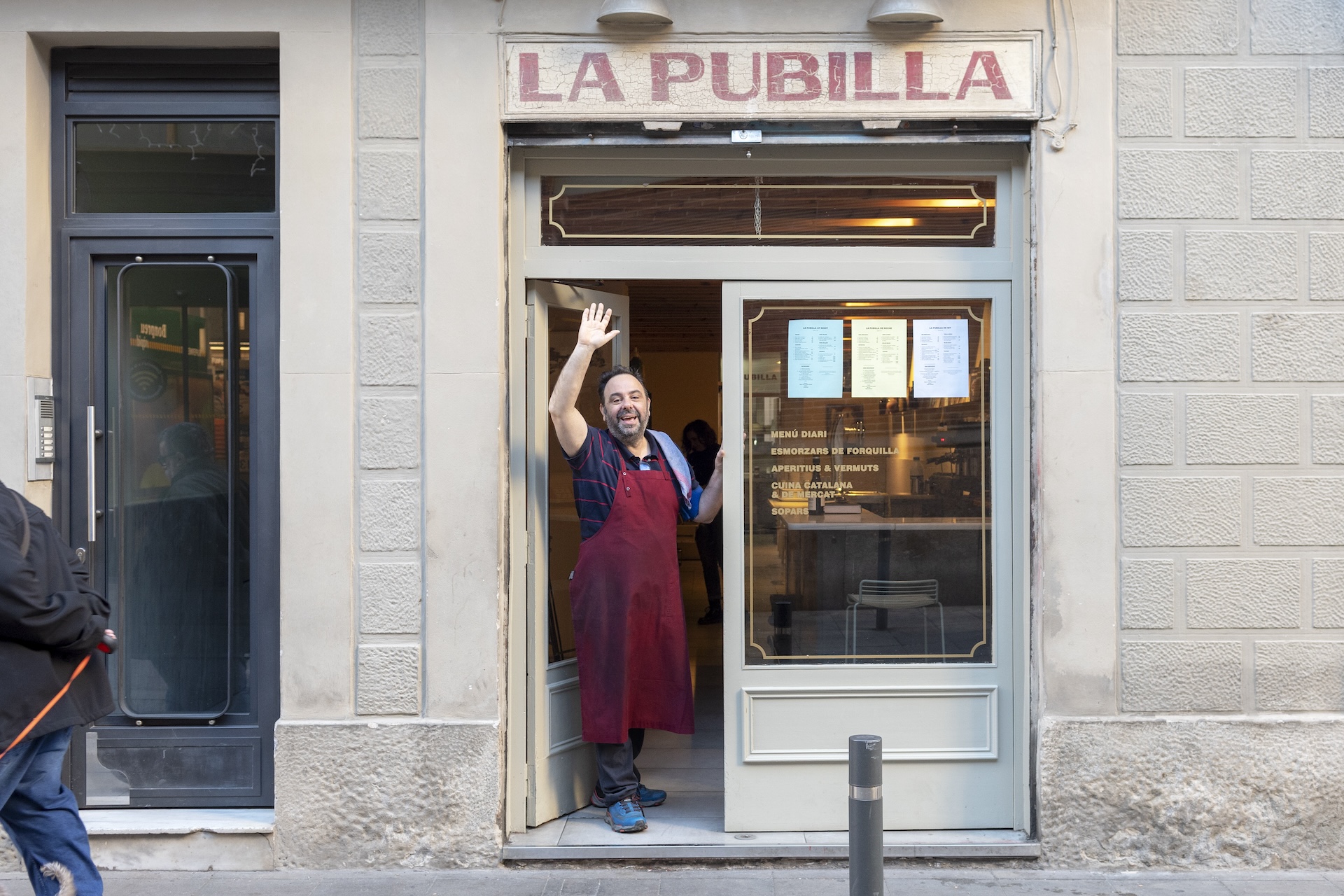We can't find the internet
Attempting to reconnect
Something went wrong!
Hang in there while we get back on track
Barcelona's culinary record
Barcelona today has a well-developed and strongly rooted Catalan culinary scene, something that wasn’t true a few decades back. In that sense, the reclamation of Catalan identity in the post-Franco era has not just been a political endeavor but also a culinary one.
Get the Full Story →Tour Barcelona with Culinary Backstreets®
Upcoming Barcelona Food Tours
discover the city, street by street, bite by bite
Explore Barcelona
Barcelona
Mamá Heladera: Gelato, Flavored By Memories
The smell of clean clothes with a lavender sachet from grandma’s closet; the family farm in nearby Lleida province during summer with apple trees and wild aromatic herbs growing all around; peaches washed in seawater during a beach day; an afternoon snack of popsicles while playing under the pine tree in the garden. These are just some of the memories that neighbors left in the mailbox of Mamá Heladera in Barcelona’s Poblenou, where owner Irene Iborra turns them into gelato flavors – an initiative that was recently awarded by the Barcelona City Council as best new innovative business (XVII Premis Barcelona Comerç). Mamá Heladera sits next to Tío Che, a classic horchateria and ice-cream parlor on Rambla del Poblenou that opened in 1912.
Read moreBarcelona
Hermós Bar de Peix: Beautiful Fish Bar
Hermós Bar de Peix is the new fish bar by Alexis Peñalver, owner of our longtime Gràcia neighborhood favorites La Pubilla and its tapas-focused little sibling Extra Bar. It might sound a little self-flattering, but the bar’s name (which means “Beautiful” in Catalán) is, in fact, a powerful local symbol. Hermós is the ironic nickname of the homely, humble fisherman of the book El Quadern Gris by the famous Catalan journalist and food writer Josep Pla. Hailing from L’Empordà on the northern Catalan coast, the character’s only relief for the pains of life are the suquets the peix – fish stews. Hermós the bar is a tribute to the magnificence of the Catalan fishing tradition, celebrated here with fire, casseroles and bottles of wine in a little bar inside La Llibertat Market, right next to its fishmonger.
Read moreBarcelona
Denassus: Follow Your Nose
Denassus can be found in a narrow space on Blai Street in Barcelona’s Poble Sec neighborhood. Here, the bar occupies nearly half the room, with little tables lining the other side. Upon entry, we are greeted by the jubilant god of wine himself: the giant face of Bacchus, covered in grapes, looks down on us from the wall above. He presides over the scene: a warm, relaxed atmosphere in which to enjoy natural wines and thoughtful dishes. It’s not easy to find a place that blends quality and fair prices, tradition and modernity, identity and open vision, all into one easy-going style. Denassus has this touch.
Read moreBarcelona
Fonda Pepa: Viva La Kitchen
Back in the day, weary travelers in Spain could make a stop at a village fonda, a type of inn or tavern, for a hearty meal and a place to rest their heads. Today, in Latin America, fonda has a more contemporary meaning, including popular restaurants and cantinas serving food and drinks. Both rely on down-home, no-frills fare. But at Fonda Pepa in Barcelona, chefs Pedro Baño and Paco Benítez have taken this concept to new gastronomic heights. The restaurant has the easygoing vibe of a village canteen, with the flavors of a royal kitchen. It was the Covid-19 pandemic that gave the Catalan Pedro and Mexican Paco the last little push they needed to jump into a new personal adventure.
Read moreBarcelona
Berbena: Back to Basics
At first glance, Berbena, a restaurant in Gràcia, resembles a small, pretty tree with dazzling foliage – it offers a sophisticated and complex dining experience. But the restaurant’s delicate attributes, those pretty leaves, wouldn’t be possible without a carefully tended trunk and roots. In short, the basics matter, something that its creator, chef Carles Pérez de Rozas, decided after years spent in high-end kitchens. Carles had a culinary education par excellence: After studying at the prestigious Hofmann School, a culinary institution in Barcelona, he worked at several Michelin-starred restaurants in Catalonia, such as Drolma, Saüc, and Carmen Ruscalleda’s iconic Sant Pau. A job in the restaurant at the Hotel de Ville de Crissier brought him to Switzerland; he then spent a short and intense period in France with the great chef Michel Bras. In Japan, he trained alongside Seiji Yamamoto, in his Tokyo restaurant Nihonryori RyuGin, adding more notches of refined knowledge to his belt.
Read moreBarcelona
Taberna Noroeste: Travel by Tapas
Born right before the Covid-19 storm, Taberna Noroeste opened its doors in February 2020, mere weeks before the pandemic hit Spain and strict confinement forced them to close. It was a turn of events that spelled disaster for many established restaurants and food businesses, let alone one that was brand new. Yet this project from the chefs Javier San Vicente and David López has grown healthy and strong, despite the hardship, and emerged with a unique culinary identity, now known across the city for elevating the popular cuisines of Galicia and Castilla y León (Castile and León, in western Spain) while incorporating Catalan touches.
Read moreBarcelona
El Racó de l’Agüir: All the Rice Moves
El Racó de l’Agüir (“Agüir’s Corner”), a restaurant in Barcelona’s Sant Antoni neighborhood, has been a long time in the making: it represents the life’s work of the Agüir family, the culmination of their talent and experience. Two generations can be found here – parents Roser and Ferran, who have managed four different restaurants over the course of their careers, and their sons, Iván and Ferran, both of whom are now in their 40s and grew up working with their parents. Mom and dad opened El Racó de l’Agüir in 1990, but after two years their progeny took over the reins.
Read moreBarcelona
Cal Siscu: Seafood Takes the Crown
Despite the big wooden casks on the wall and the creaky shelves crowded with bottles behind the bar, wine is no longer king at Cal Siscu, an old bodega (wine store and tavern) in Hospitalet de Llobregat, a city located on the periphery of the Barcelona metropolitan area. The new ruler, who has deigned to keep these old relics from an earlier era, is seafood – every day the bar’s counter is covered with trays of majestic treasures from the Mediterranean and the Atlantic like prawns, clams, barnacles and sea snails. Founded by Francisco “Siscu” Rosés in 1933, Cal Siscu originally sold bulk wine and liquors. At that time, the only seafood served came from a can. Customers frequented the tavern, which also doubled as a home (Siscu and his family used to live upstairs), to fill up their wine jugs and sip on a vermut with some olives and conservas like tuna or sardines.
Read moreBarcelona
Agreste de Fabio & Roser: Good Weed
Up in Barcelona’s hills, in the El Coll neighborhood, where the city ends and the sky is cut by the spiky shapes of the pine trees in Collserola Park, Agreste de Fabio & Roser is sprouting up. Emphasizing sustainability and healthy eating, the restaurant is creating delicious dishes that merge Catalan and Italian traditions with contemporary flourishes. Room manager Roser Asensi and her partner, chef Fabio Gambirasi, created this project (the name means “bad weed” in Spanish) less than a year ago and people are already singing their praises. On a recent visit, we could hear words of admiration from different guests flying around the room over the course of our meal.
Read moreDaily Dispatches from the Frontlines of Barcelona
Latest Stories: Barcelona

Get Your Free Barcelona Pocket Guide
Introducing our pocket-sized Barcelona guide — perfect for your next culinary adventure. Yours free when you sign up for our newsletter.
Get Your Free Barcelona Pocket Guide
Introducing our pocket-sized Barcelona guide — perfect for your next culinary adventure. Yours free when you sign up for our newsletter.
Immersive Multi-Day Journeys In and Around the World’s Culinary Capitals
Upcoming trips beyond Barcelona
Visual Dispatches from the Frontlines of Local Eating
Barcelona Videos

Discover Barcelona With Culinary Backstreets®

Market Watch: La Boquería Reclaims Its Neighborhood Roots

The Shellfish Catchers of Cambados
Culinary Backstreets® Envoys, Always Searching for the Next Hidden Gem
Meet Our Barcelona Team

Paula
Barcelona Bureau Chief

Senem
Barcelona Tour Leader

Lynda
Barcelona Tour Leader

Pam
Barcelona Tour Leader

Lior
Barcelona Tour Leader

Laia
Barcelona Tour Leader

Daria
Barcelona Tour Leader

Moa
Barcelona Tour Leader

Iván
Barcelona Tour Leader

Florian
Barcelona Tour Leader

Barcelona: An Eater’s Guide to the City
Part of Culinary Backstreets® “An Eater’s Guide to the City” series, this newly updated and expanded book was created with those who travel to eat in mind.
Visit the shopYour Questions, Answered
Barcelona is cradled on mainland Spain’s northeastern Mediterranean Coast, just a 2-hour drive south from the French Pyrenees, and it is the capital of Catalonia. It is Spain’s major Mediterranean port and commercial center famed for its architecture, art and Catalan cultural heritage.
Barcelona has a wide variety of tourist attractions such as La Sagrada Familia, the Gothic Quarter (Barri Gotic), Casa Batllo and Casa Milà, Park Güell and the long, wide beaches facing the Mediterranean Sea.
The best time of year to visit Barcelona is from earl May to early June. This is when temperatures are the most pleasant, in the low to mid-70s, and a number of activities and festivals kick off the start of summer. Summer itself can be hot and humid, with many folks who live in Barcelona preferring to leave.
The best area to stay in Barcelona for first time visitors is Barrio Gotico (the Gothic Quarter). This is the historical and geographical heart of the city, and one of the best places for lodging if you want to be close to all the important landmarks, attractions and activities – not to mention the tapas bars!
The average annual temperature in Barcelona is about 70 F during the day and just under 50 at night. In January, the coldest month, typically the temperature ranges from 54 to 64 during the day and 43 to 54 F at night.
Barcelona can be quite expensive to visit when coming from the United States, but it is not as expensive as other big European cities. There are many budget offerings that make it possible to visit and keep costs low. Like most big cities, Barcelona has quality food at low prices.
According to the “Safe Cities Index 2019” from the Economist Intelligence Unit (EIU), Barcelona was one of the safest cities in the world in terms of general crime, and overall ranked 19th in personal security and 26th in the world. Pickpocketing and petty theft are an issue, especially in tourist-heavy areas, so it is best to remain cautious.
Barcelona is a well-known destination for foodies. One of the most popular foods in Spain is paella, and here you can have some of the best paellas in the country. Gazpacho, patatas bravas, bombas, croquettes and churros other famous foods in Barcelona, but there is much more discover. You can check out our list of the 10 essential food stops in Barcelona.
Spain is about 86% fully vaccinated, and masks are not required except on public transportation.
American citizens can travel from the United States to Spain visa-free for up to 90-days, with proof of vaccination.
You can fly directly to Barcelona from many locations worldwide. Barcelona Airport is the second largest airport in Spain. It is an international airport. In total, there are 196 airports in 61 countries around the world that have direct flights to Barcelona.
It’s impossible to choose just one place to name the best restaurant in Barcelona! While you can get anything from up-scale to down-home, we recommended starting with our list of the 10 essential food stops in Barcelona.
Many of the city’s streets outlet onto Barceloneta Beach. This is the Miami Beach of Spain: crowded, boisterous and endlessly entertaining. It is safe to swim at Barcelona’s beaches. There are no dangerous currents and rarely big waves.
Barcelona is one of the most popular cities in Europe, and visiting it together with your kids can be a wonderful experience for the entire family! There is so much to do and see in Barcelona with kids, especially because it is such a safe and kid-friendly city.




































